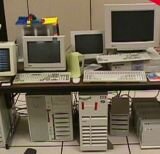November 20, 2004
Froogle Wish List
By Olivier Duffez, November 20, 2004 at 09:36 PM in:
Froogle has released Wish Lists! So you can create a wish list of products from any arbitrary website (that you can find in Froogle, which is pretty much any website).
Here are the explanations given by Google on Froogle FAQ:
What is this Wish List thing?
Your Wish List is the public part of your Shopping List. If there's an item on your Shopping List that you'd like to share with friends or family, just add it to your Wish List by checking the "In Wish List" checkbox next to the item. It will instantly be added to your Wish List, which will be accessible to anyone who searches for your e-mail address on the Froogle Shopping List homepage. You can also e-mail the URL, http://froogle.google.com/shoppinglist/shoppinglist?action=ShowWishList&email=YOUR_EMAIL_ADDRESS, to others. (If you send out your Wish List a few weeks before Christmas or your holiday, you may never again receive an orange and green plaid sweater for a present.)
Related article
- - 2004-10-13 10:28
no comment - no trackback
Read what others are saying about this post on Bloglines, or on Feedster or on Technorati.


 Douwe Osinga is working for Google on the Google File System architecture. If you don't know what is the Google File System (GFS) you should read this paper called
Douwe Osinga is working for Google on the Google File System architecture. If you don't know what is the Google File System (GFS) you should read this paper called 